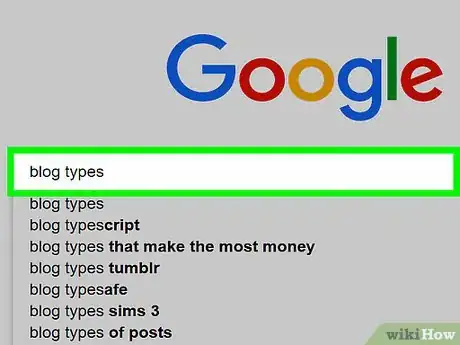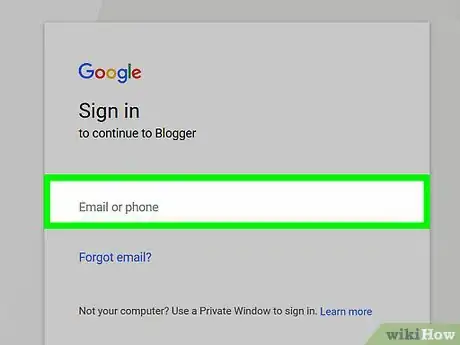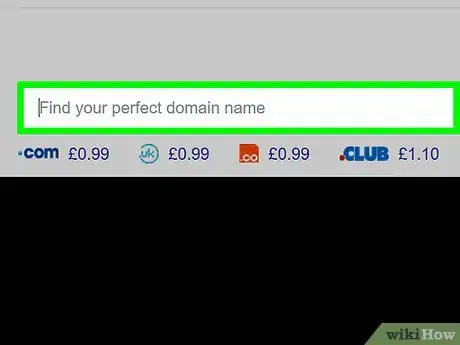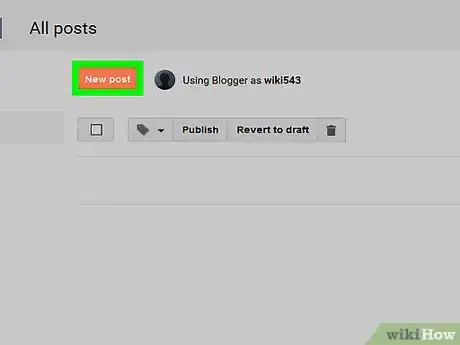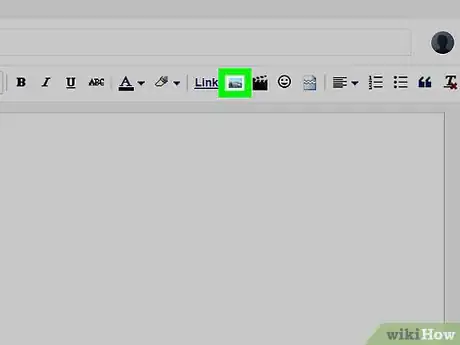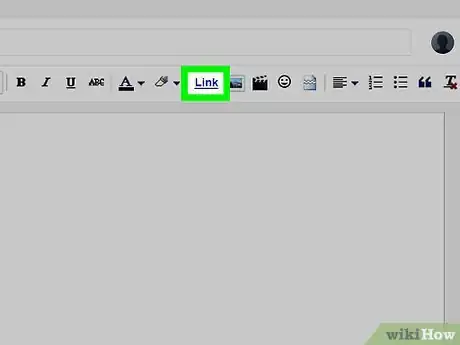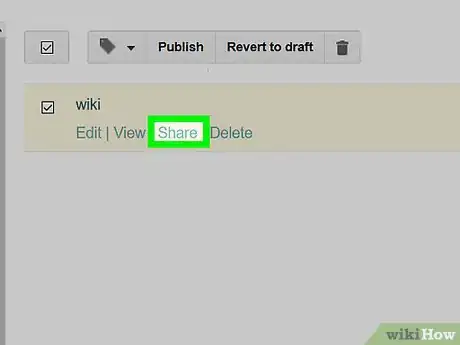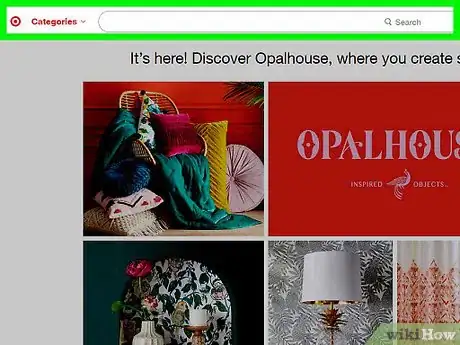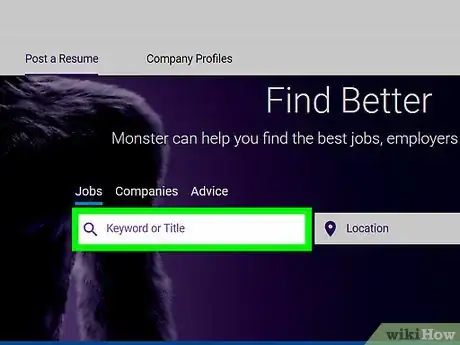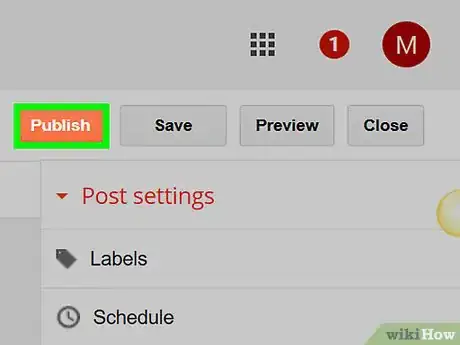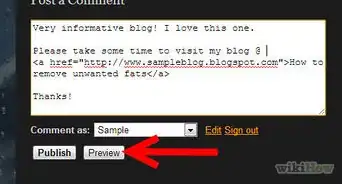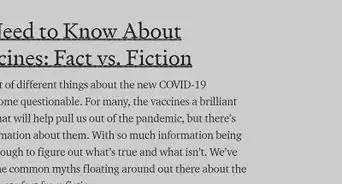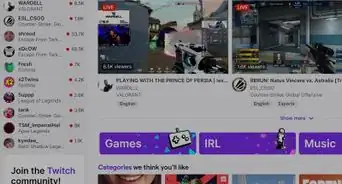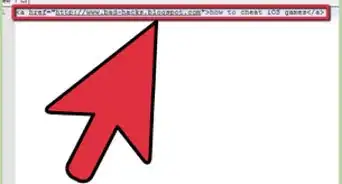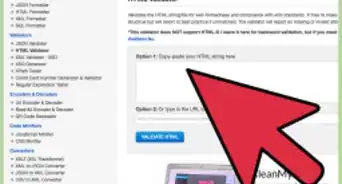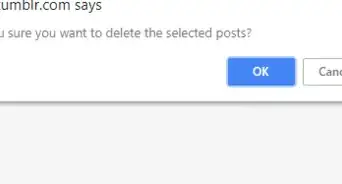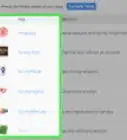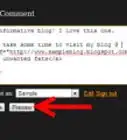This article was co-authored by wikiHow staff writer, Hunter Rising. Hunter Rising is a wikiHow Staff Writer based in Los Angeles. He has more than three years of experience writing for and working with wikiHow. Hunter holds a BFA in Entertainment Design from the University of Wisconsin - Stout and a Minor in English Writing.
There are 7 references cited in this article, which can be found at the bottom of the page.
The wikiHow Tech Team also followed the article's instructions and verified that they work.
This article has been viewed 36,003 times.
Learn more...
Blogging is a fun pastime to entertain and inform a large audience. If you’re feeling serious about your blog or looking to make money by starting one, the market is easy to access for you to step into. Make a commitment and start blogging today, and you can see the rewards pay off!
Steps
Starting a Blog
-
1Be an expert on a topic you enjoy talking about. A large audience won’t want to hear about your day-to-day life, but they will read if you are passionate about something. Use what you know well to your advantage to create content that is interesting to a reader.
- Make sure what you’re writing about isn’t too niche. For example, if you are interested in balloon twisting, make sure the audience of balloon-twisters who will read your content is large enough.[1]
-
2Determine if you want to write opinions, reviews, or essays. Each of these styles will cater to a different audience when it comes time to post your blog. Consider what category you fall into as a blogger, and stay consistent with your style.[2]
- Opinion blogs like Huffington Post attract many political readers.
- Reviews will help potential product buyers understand how you felt about a product to help base their decisions.
- Essays can be stories or anecdotes that are relatable to an audience.
Advertisement -
3Pick a blogging website to start on. Websites like Wordpress or Blogger help provide setups for a novice or an experienced blogger wanting to become professional. These sites will give you tools and options, like editing metadata to help your blog succeed.[3]
-
4Purchase your own domain name. Domains are usually around $15 for a year of hosting through GoDaddy or Hover. Having your own domain name will help you look more professional and will allow an easy link for your audience to type in to access your posts.
- When deciding on a domain name, consider using your name or something related to the topic you are talking about.
- When choosing a hosting service, make sure to evaluate their up-times and the speed they provide. Many will have these statistics available from their home page.
Maintaining Your Posts
-
1Write posts every day. Consider your blog as a job you need to upkeep every day. Audiences won’t want to wait months in between blog posts, so provide them with new content daily to keep site traffic up and your readers interested.
- It’s a smart idea to write blog posts ahead of time and save them as drafts to publish when you need them.
-
2Use clear and specific post titles. To help search engine optimization (SEO), try to use concise titles to explain what your post is discussing. There’s a reason many articles start out “10 Things You Didn’t Know About ______”.[4]
- Use keywords and phrases that are commonly typed in on search engines to help visibility for your blog.
-
3Include images in your posts to draw reader attention. Using pictures related to your content will help break up large blocks of text and also keep a reader intrigued in what you have to say. Include 2-3 images per post if you can.[5]
- Make sure to properly credit the image sources if they are not your own photos.
-
4Limit your posts to 2,500 words. Readers want to get the most out of their time, so try to use each word to its full advantage. 2,500 words is a length that is manageable to read in one sitting and will seem filled with more information than a blog post that only has 1,000 words.[6]
-
5Link to other bloggers to support your ideas. Linking to other blogs will help back up your views and provide more content for your reader. Readers will expect to receive credible information in your posts and will help you avoid plagiarizing other bloggers.[7]
- Link back to older posts you’ve written to help prove your point and get traffic moving on posts that may otherwise go on forgotten.
-
6Promote your blog through social media. Create a presence for your blog through Facebook, Twitter, and Instagram to promote your new content. Your goal is to build a large audience of readers, so use hashtags with keywords related to your blog to help move it forward.
- Don’t worry about being an annoying presence to your friends as you do this. Consider promoting your blog as building your business.
Earning Money on Your Content
-
1Use Google AdSense on your site to run ads. Adsense helps place contextual ads on your blog page that helps you earn money when they receive clicks. AdSense through Google requires an account and a sign-up, and it can be added directly to your website from there.[8]
-
2Link affiliates to your website to earn money per click. Recommend a product on your blog that will earn you money when people sign up using the affiliate link. You can sign up through many companies to set an affiliate link, such as Amazon or Target that can help you earn revenue.
-
3Consider finding a business to write blogs for. If building your own business through a personal blog isn’t right for you, search on job boards like Indeed or Monster to find businesses looking for blogging services. Many companies are looking for writers for their original content.[11]
-
4Know that it takes time to build an audience and revenue. Earning money on a blog is not an overnight process. Finding interested readers for your blog may take some time, so be patient and continue writing. The more content that you are able to crank out, the more eyes you may get on your blog.[12]
- Continue working another job as you get your blog off the ground to help you stay steady with your finances.
Community Q&A
-
QuestionHow do bloggers earn money?
 Community AnswerTypically through advertising. Refer to Method 3.
Community AnswerTypically through advertising. Refer to Method 3.
References
- ↑ https://www.entrepreneurs-journey.com/564/do-you-have-what-it-takes-to-be-a-professional-blogger/
- ↑ http://www.dummies.com/social-media/blogging/professional-blogging-for-dummies-cheat-sheet/
- ↑ https://moz.com/blog/12-things-that-will-kill-your-blog-post-every-time
- ↑ https://moz.com/blog/12-things-that-will-kill-your-blog-post-every-time
- ↑ https://www.snapagency.com/blog/blog-posts-2017-whats-best-length-seo
- ↑ https://www.snapagency.com/blog/blog-posts-2017-whats-best-length-seo
- ↑ https://moz.com/blog/12-things-that-will-kill-your-blog-post-every-time
- ↑ https://www.shoutmeloud.com/basic-guide-how-to-create-a-google-adsense-account.html
- ↑ https://money.usnews.com/money/articles/2009/05/19/how-to-earn-money-as-a-professional-blogger

